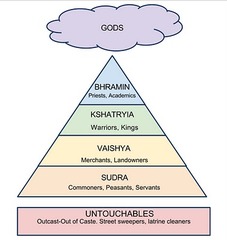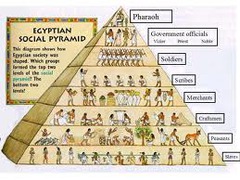how did people made permanent settlement
Some hunters & gatherers were advanced, but were never able to develop complex societies because they had to migrate to find food
Neolithic & Paleolithic allowed them to
First civilization began in the river valleys (mesopotamia)
Peolithic Revolution
The period of the Stone Age associated with the evolution of humans. It predates the Neolithic period.
nomads used simple stone tools and relied on hunting and gathering for food.
THE NEOLITHIC REVOLUTION
The Neolithic Revolution is a turning point in history.
Before the Neolithic Revolution (during the Paleolithic Age), nomads used simple stone tools and relied on hunting and gathering for food.
During the Neolithic Age, peoples' diet and shelter dramatically changed. The domestication of animals and the planting* of crops (such as wheat and barley) led to the development of civilizations**.
*planting = cultivation
**civilizations = permanent homes and villages = settled communities
Catal Huyuk
Farming thrived here 8,000 years ago; located in modern Turkey
Population of 5,000 to 6,000 grew crops, raised sheep and cattle
Made pottery, wove baskets, traded valuable obsidian
In 1958, remains of village found; wall paintings, religious shrines
The four earliest (ancient river valley) civilizations
EGYPT (NILE River)
(The Old, Middle, and New Kingdom were periods in ancient Egyptian history. The ancient Egyptians harvested papyrus for writing
2) CHINA (YELLOW River)
The Yellow River is also called the HUANG HE River.
3) INDIA (INDUS River)
The Indus River is actually located in modern-day Pakistan (in SOUTH ASIA).
The archaeological remains of the Indus Valley cities of Harappa and
Mohenjo-Daro show evidence of urban planning (the cities were designed in grid-like patterns). This is an indication that a well organized central government had been established.
4) MESOPOTAMIA (The TIGRIS and EUPHRATES Rivers) AKA Babylonian civilization.
Mesopotamia was located in modern-day Iraq.
Why did ancient civilizations develop in valleys of the rivers?
The climate and geography of these river valleys favored agriculture.
The river valleys provided good farmland. (A plentiful water supply
provided the means for irrigation. RICH [FERTILE] SOIL helped grow crops.)
River valleys also provided a source of fresh water and transportation
(e.g. the transportation of soldiers and resources).
• River valleys contained rich soils because of annual (yearly) floods.
CHARACTERISTICS (ELEMENTS) OF CIVILIZATIONS
Centralized government
2. Organized religion(s)
3. Social classes
4. Specialization of labor (different jobs)
5. Art and architecture
6. Cities
7. Public Works (e.g. roads, bridges, temples)
8. System(s) of writing
Mesopotamia
Major Cities : Babylon & Sumer & Assryria & Akkad
Fertile Cresent / land between the river / between euphrates and tigris river.
Easy to access to = invasions
Unpredictable floods
Advanced cities:
Sumerian city-states were protected by high walls
At the city center was a temple called a ziggurat
Specialized Workers:
At the top of society were priests, and then kings
In the middle were skilled workers, like merchants
At the bottom, were common farmers & slaves
Government:
Babylonian King Hammurabi created the first legal code
Hammurabi's Code had 282 laws based on justice & retaliation (an eye for an eye)
The code had different punishments for the various levels of society
Writing:
Sumerians made the world's 1st writing called cuneiform
Phoenicians simplified cuneiform to a 22 letter alphabet
Phoenician merchants spread the alphabet throughout the Mediterranean world
The alphabet influenced Greek, Latin, & English
Technology:
Sumerians inventions include the wheel, sail, plow, & bronze metalwork
Ancient Egypt
Major Cities : Thebes & Memphis
"Gift of the Nile" - Predictable floods
Hard to access to due to deserts
The Nile flows upstream
Advanced Cities:
Cities developed along the Nile River in "Upper Egypt" & "Lower Egypt"
Specialized Workers
Rulers, officials, priests, wealthy land others led society
Government :
Pharaohs ruled Egypt as "king-gods" & were thought to control nature
Egyptians constructed pyramids & elaborate tombs for the pharaohs
Religion:
Egyptians were polytheistic & believed the gods controlled all aspects of life
Writing:
Egyptian hieroglyphics was both pictograms & a phonetic alphabet
Hieroglyphics were translated using the Rosetta Stone
Technology:
Egyptian ideas included a 365-day calendar, geometry, astronomy, & pyramids
Indus Valley
Monsoon
Major Cities : Harappa & Mohenjo-Daro
Advanced cities:
Indus cities were laid out in a grid system with high walls & citadel of major buildings
specialized Workers:
Indian society was divided by the "caste system" which divided people based on their purity in Hinduism
Government:
Little is known about Indus government other than they were ruled by kings
Religion:
Believed in a polytheistic religion called Hinduism
Hindus believe that one's soul is reborn until moksha is achieved (reincarnation)
Moksha (enlightenment or nirvana) is the spiritual release from human form
A soul's karma (good or bad deeds) effect reincarnation
Writing:
Indus writing has not been fully translated so much of Indus life is still a mystery
Writing contained about 400 symbols that were both pictograms & phonetic characters
Technology:
Advanced plumbing; Most houses had toilets & private bathrooms connected to underground sewer systems
Standard, oven-baked bricks
Caste System in Indus Valley
Social System in Ancient Egypt
bhramin
highest tier : priest ,academics
kshatryia
second : warriors ,kings
vaishya
third : merchant , landowners
sudra
fourth : commoners , peasants, servants
untouchables
last outcast-out of caste: street sweepers latrine cleaners
vedas
A Hindu holy book which is a collection of Aryan hymns that were transmitted orally before being written down in the 6th century BCE.
Collections of hymns, songs, prayers, and rituals honoring the barious gods of the Aryans.
egyptian social pyramid
pharaoh
government official
soldiers
scribes
merchants
craftsmen
peasants
caste system
priest , academics
warriors, king
merchants landowners
commoners, peasant , servants
last outcast-out of caste: street sweepers latrine cleaners
social system mesopatamia
priests
kings
skilled workers, like merchants
farmers & slaves




